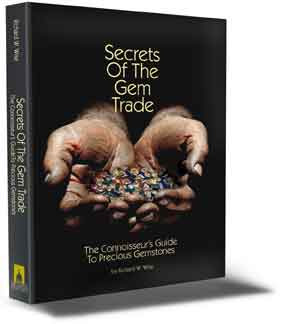A Victory of style over Substance?
April 25th at Christies, in a packed auction gallery, lot 261 a cushion cut 22.66 carat Kashmir sapphire set in a pendant surrounded by diamonds sold for a world record price of $3,064,000 to an anonymous bidder. At $135,000 per carat, this sale topped the former world record held by the 66.02 carat “Rockefeller Sapphire” a Burmese gem that sold for $48,871 at auction in 1991. This sale marks the ascension of sapphires found on a rocky hillside in the Indian State of Kashmir into the pantheon of super-star gemstones.
Speaking in the wake of the sale, Christie’s Head of Jewelry, Rahul Kadakia, made the following rather curious statement:
“This auction marks a turning point in the jewelry world where original design, rarity and provenance prove to be just as important as the quality of a gem.”
What precisely did Mr. Kadakia mean? Is he celebrating the final triumph of style over substance? Does he mean that the sapphire in question though rare is not so fine? The record breaking sapphire pendant (above) is certainly not a striking example of original design.
According to Christopher Smith, Vice President & Chief Gemologist at The American Gemological Laboratory, the sapphire in question is a “nice stone”. Smith, who has seen the stone but under less than ideal circumstances, makes the point that sapphires of the finest color tend to be a bit dark particularly in subdued lighting. This stone is a bit lighter and brighter at about 70% tone on the AGL scale where 80% would be ideal. The stone is well proportioned, brilliant and on a scale of 1-10 would rate between 8-8.5.
As to the gem’s provenance, interesting though not remarkable, it was never owned by royalty nor lost on the field of battle nor has it had any remarkable stories or curses associated with it. It was purchased by James J. Hill, a Minnesota industrialist of the Gilded Age, and given to his wife, Mary, on Dec. 24, 1886. Originally part of an elaborate necklace—since broken up– the sapphire remained in the Hill family until the death of Hill’s granddaughter Gertrude Boeckmann Follett, in 2006.
Boeckmann Follett, in 2006.
So what business does a nice sapphire like this have claiming a record price? Well though it may not be able to stand toe to toe with the former record holder, the 66 carat Rockefeller Sapphire (image:right), which is in Smith’s words “extraordinary” and one of the “world’s preeminent sapphires”, it is rare. Kashmir sapphires in excess of 20 carats are quite rare and if you own one it’s a seller’s market.
The fact is the finest of the Kashmir sapphire has been recognized as the top of the mark in sapphire almost since the stone’s discovery in the late 19th Century. Celebrated for it’s cornflower blue color and its trademark sleepy quality, a gem with proven Kashmir provenance commands four times the price of a comparable Ceylon stone and twice the price of a comparable Burmese sapphire. Due to its beauty and rarity it was the next logical candidate for gemstone super-stardom.
Is this a “turning point”, a victory of style over substance, of provenance over quality in the gem markets? This much is obvious, just the price of natural Burmese ruby skyrocketed in the wake of the record breaking sale of the 8.01 carat gem at Christies just two years ago, Kashmir prices, already edging toward $100,000 per carat wholesale, will strengthen. Anything with a Kashmir certificate from gem quality to aquarium gravel will see a big boost in asking prices and the publicity will further induce star-struck consumers to choose geography first and quality second. But, this is not a new trend rather just a continuation of a trend that has been in evidence for quite some time.

 Follow me on gem buying adventures in the exotic entrepots of Burma and East Africa. Visit the gem fields of Australia and Brazil. 120 carefully selected photographs showing examples of the highest quality gems to
Follow me on gem buying adventures in the exotic entrepots of Burma and East Africa. Visit the gem fields of Australia and Brazil. 120 carefully selected photographs showing examples of the highest quality gems to educate the eye, including the Rockefeller Sapphire and many more of the world’s most famous gems. Consider my book: Secrets Of The Gem Trade, The Connoisseur’s Guide To Precious Gemstones.
educate the eye, including the Rockefeller Sapphire and many more of the world’s most famous gems. Consider my book: Secrets Of The Gem Trade, The Connoisseur’s Guide To Precious Gemstones.
“Wise is a renowned author… He’s
done a marvelous job of this first book, monumental work, a tour de force…My recommendation: Buy
this book”.
Charles Lewton-Brain, Orchid
Only $39.95. Read a couple of chapters online: www.secretsofthegemtrade.com.
Buy it on Amazon: www.amazon.com

